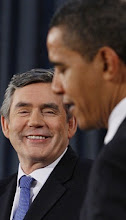Many statements have been made in the media and in academia, claiming that the rich are gaining not only larger incomes but a growing share of all incomes, widening the income gap between people at the top and those at the bottom. Almost invariably these statements are based on confusing what has been happening over time in statistical categories with what has been happening over time with actual flesh-and-blood people...
Although such discussions have been phrased in terms of people, the actual empirical evidence cited has been about what has been happening over time to statistical categories --- and that turns out to be the direct opposite of what has happened over time to flesh-and-blood human beings, most of whom move from one category to another over time. In terms of statistical categories, it is indeed true that both the amount of income and the proportion of all income received by those in the top 20 percent bracket have risen over the years, widening the gap between top and bottom quintiles. But U.S. Treasury Department data, following specific individuals over time from their tax returns to the Internal Revenue Service, show that in terms of people, the incomes of those particular taxpayers who were in the bottom 20 percent in income in 1996 rose by 91 percent by 2005, while the incomes of those particular taxpayers who were in the top 20 percent in 1996 rose by only 10 percent in 2005 --- and those in the top 5 percent and one percent actually declined.
When those taxpayers who were initially in the lowest income bracket had their incomes nearly double in a decade, that moved many of them up and out of the bottom quintile --- and when those in the top one percent had their incomes cut by about one-fourth, that may well have dropped them out of the top one percent. Internal Revenue Service data can follow particular individuals over time from their tax returns, which have individual Social Security numbers as identification, while data from the Census Bureau and most other sources follow what happens to statistical categories over time, even though it is not the same individuals in the same categories over the years.
Many of the same kinds of data used to claim a widening income gap between "the rich" and "the poor" --- names usually given to people with different incomes, rather than different wealth, as the term rich and poor might seem to imply --- have led many in the media to likewise claim a growing income gap between the "super-rich" and the "merely rich." ... Once again, the confusion is between what is happening to statistical categories over time and what is happening to flesh-and-blood individuals over time, as they move from one statistical category to another.
Despite the rise in the income of the top 0.1 percent of the taxpayers as a statistical category, both absolutely and relative to the incomes in the other categories, as flesh-and-blood human beings those individuals who were in that category initially had their incomes fall by a whopping 50 percent between 1996 and 2005...
[M]any among the intelligentsia are ready to seize upon any numbers that seem to fit their vision. Behind many of those numbers and the accompanying alarmist rhetoric is a very mundane fact: Most people begin their working careers at the bottom, earning entry-level salaries. Over time [they enter] successively higher income brackets... More than three-quarters of working Americans whose incomes were in the bottom 20 percent in 1975 were also in the top 40 percent of income earners at some point by 1991. Only 5 percent of those who were initially in the bottom quintile were still there in 1991, while 29 percent of those who were initially at the bottom quintile had risen to the top quintile. Yet verbal virtuosity has transformed a transient cohort in a given statistical category into an enduring class called "the poor."
Only by focusing on the income brackets, instead of the actual people moving between those brackets, have the intelligentsia been able to verbally create a "problem" for which a "solution" is necessary. They have created the powerful vision of "classes" with "disparities" and "inequities" in income, caused by "barriers" created by "society." But the routine rise of of millions of people out of the lowest quintile over time makes a mockery of the "barriers" assumed by many, if not most, of the intelligentsia.
The confusion between statistical categories and flesh-and-blood human beings is compounded when there is confusion between income and wealth. People called "rich" or "super-rich" have been given those titles by the media based on the basis of income, not wealth, even though being rich means having more wealth. According to the Treasury Department: "Among those with the very highest incomes in 1996 --- the top 1/100 of 1 percent --- only 25 percent remained in this group in 2005." If these were genuinely super-rich people, it is hard to explain why three-quarters of them are no longer in that category a decade later.
-Excerpt from Thomas Sowell's book Intellectuals and Society
skip to main |
skip to sidebar


















observe, orient, decide, act
Make Perception Great Again

Election 2016
college campus psychosis

Search PerceptionAsReality

Establishment v. Trump





It is easier to deceive a multitude than one man.
-Herodotus
-Herodotus
To hear rightly is the beginning of living rightly.
-Plutarch
-Plutarch
Gonzales Flag

Goliad Flag

Gadsden Flag

Fort Moultrie Flag



smitten

not smitten


support perceptionasreality



